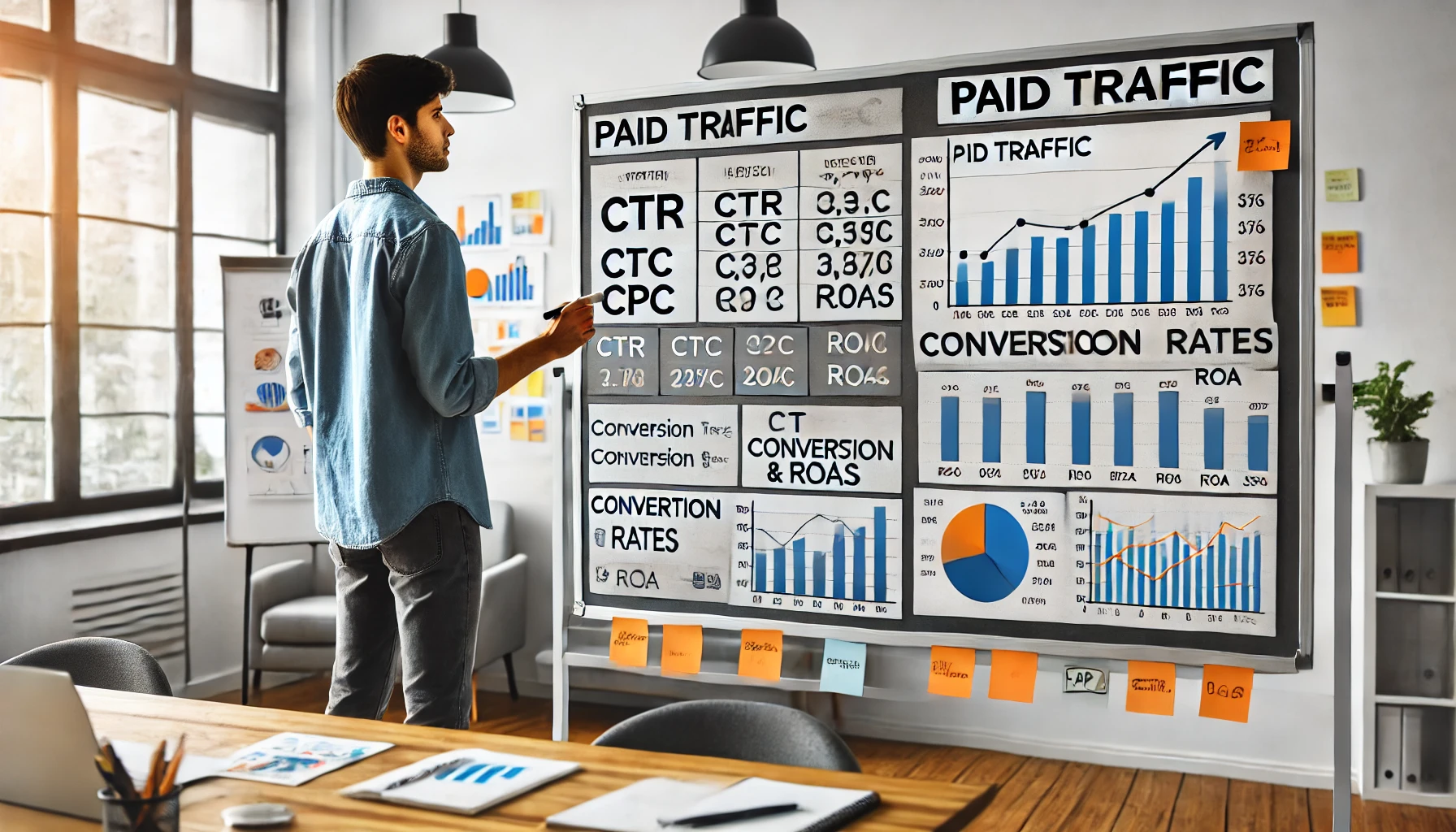📌 Introduction
Running paid traffic campaigns is not just about launching ads—it’s about continuously analyzing metrics and making data-driven decisions to optimize performance. Many advertisers struggle because they don’t know which metrics matter most or how to interpret campaign data effectively.
In this article, you’ll learn how to analyze key performance indicators (KPIs) from your paid traffic campaigns, understand what the numbers mean, and use insights to improve your advertising results.
🎯 Why Analyzing Paid Traffic Data is Essential
✔ Identifies Strengths & Weaknesses – Helps you spot high-performing and underperforming ads.
✔ Reduces Wasted Ad Spend – Ensures money is spent efficiently on what works.
✔ Improves ROI & ROAS – Data-driven decisions lead to better ad performance.
🔎 1. Understanding Key Paid Traffic Metrics
To analyze a campaign, you need to know what each metric means.
✅ Impressions & Reach
✔ Impressions – The number of times your ad was displayed.
✔ Reach – The number of unique users who saw your ad.
✔ How to Use It: High impressions but low engagement may indicate poor targeting or unappealing creatives.
✅ Click-Through Rate (CTR)
✔ Measures the percentage of users who clicked your ad.
✔ Formula: CTR = (Total Clicks ÷ Total Impressions) × 100
✔ How to Use It: A low CTR means your ad isn’t engaging enough—test new headlines, images, or CTAs.
✅ Cost Per Click (CPC)
✔ The amount you pay for each ad click.
✔ How to Use It: Compare CPC with conversion rate—high CPC and low conversions mean you may be targeting the wrong audience.
✅ Conversion Rate (CVR)
✔ The percentage of users who completed a desired action (purchase, sign-up, download).
✔ Formula: CVR = (Total Conversions ÷ Total Clicks) × 100
✔ How to Use It: A low conversion rate may indicate a problem with the landing page, offer, or audience targeting.
✅ Return on Ad Spend (ROAS)
✔ Measures how much revenue you generate for every dollar spent on ads.
✔ Formula: ROAS = Revenue ÷ Ad Spend
✔ How to Use It: A ROAS below 1.0 means you’re losing money—optimize your campaigns to improve profitability.
🛠 Recommended Tools:
- Google Ads Reports – Tracks all major campaign metrics.
- Facebook Ads Manager – Analyzes CTR, CPC, and conversions.
- Google Analytics 4 (GA4) – Provides deep insights into user behavior.
📊 2. How to Analyze & Optimize Your Data
Once you understand the key metrics, the next step is to analyze trends and make adjustments.
✅ Compare Ad Performance Over Time
✔ Track weekly and monthly performance to spot trends.
✔ Look for seasonal patterns that affect ad engagement.
✅ Break Down Data by Audience Segments
✔ Compare results by age, location, and device.
✔ Identify which audience segments perform best and reallocate the budget accordingly.
✅ Use A/B Testing to Improve Results
✔ Test different ad creatives, copy, and landing pages.
✔ Identify winning variations and increase budget for high-performing ads.
🛠 Recommended Tools:
- Google Data Studio – Creates visual reports for ad performance.
- Facebook Audience Insights – Analyzes engagement by audience type.
- Hotjar – Tracks user behavior on landing pages.
🚀 Conclusion
Analyzing paid traffic data is key to making smarter advertising decisions. By monitoring CTR, CPC, conversion rates, and ROAS, you can identify what works, eliminate waste, and maximize results.
🔥 Key Takeaways
✔ Track CTR, CPC, and conversion rates to measure success.
✔ Compare performance over time and adjust your strategies.
✔ Use A/B testing to continuously improve ad creatives.
✔ Leverage Google Analytics & Facebook Insights for deeper audience data.
By applying these techniques, you’ll optimize your campaigns for higher conversions and better ROI! 🎯
Agora, vou criar uma imagem exclusiva e diferenciada para este artigo antes de seguir para o próximo! 🚀
